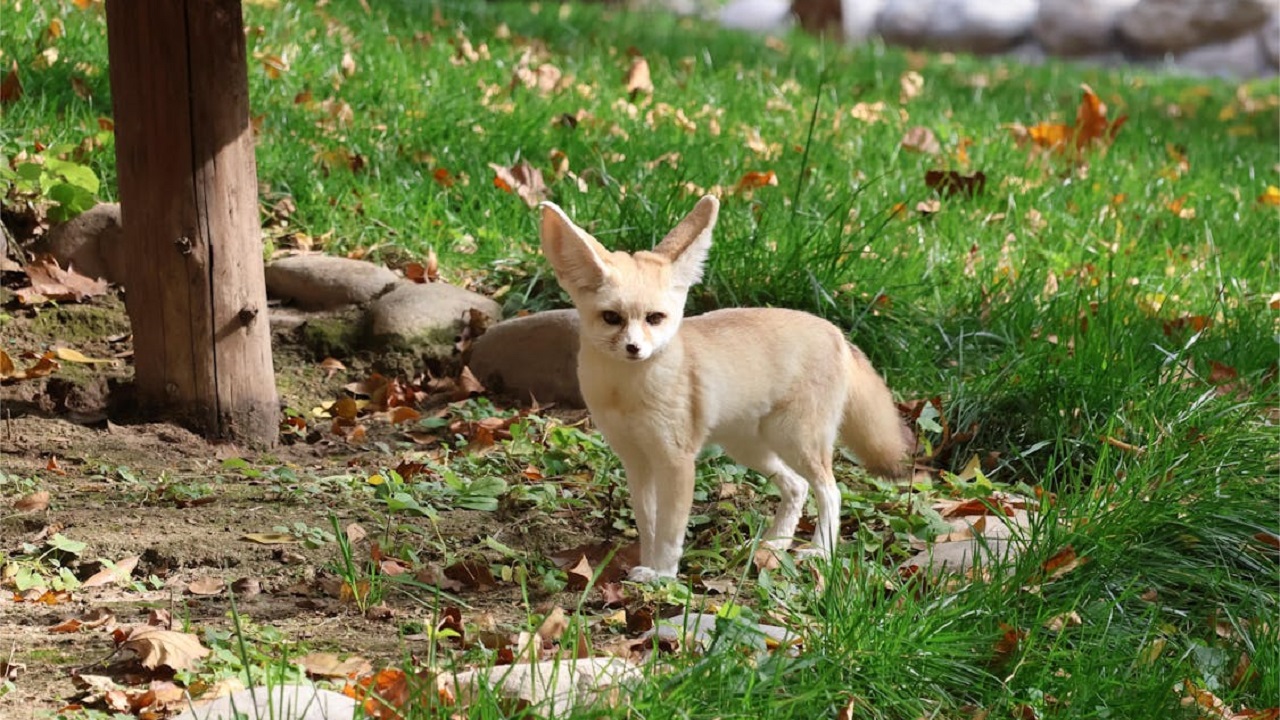The fennec fox, or vulpes zerda, if you want to use the scientific name, is one of the cutest animals on the planet. While you may recognize them for their quite comically large ears and small body, do you know other facts about these creatures, such as where they live and what they eat?
Did you know they can even bark like a dog? That’s just one of the many fascinating aspects of this small fox.
I am going to tell you all of the important facts about these cute big-eared creatures so that you can be more informed and learn why trying to obtain one to keep as a pet would be detrimental.
Physical Description
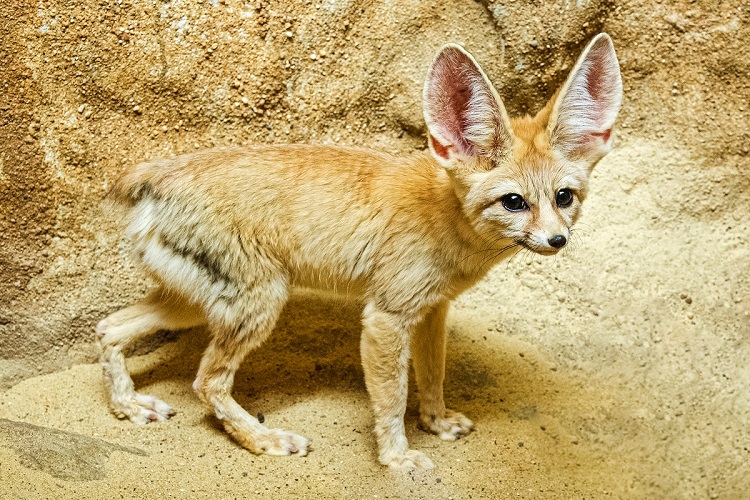
Free Public Domain image by rawpixel
The most adorable and distinctive feature of the fennec fox is the oversized ears of these cute little mammals when compared to the rest of its body. Its ears range between 4 inches and 6 inches long and look funny up against its small head.
The fennec fox has a very small body size with an average weight of 2 or 3 pounds and height of about 8 inches making it the smallest fox in the world. This fox has a pointy snout, and also a tail that has a black tip on it. As a cat lover, I find the fennec fox to look even more cuddly than your traditional house cat.
The thick and long cream-colored fur of the fennec fox is very soft, and I can imagine the fennec’s fur is like petting a cloud.
Like a lot of animals, they have a wooly undercoat which provides them with excellent protection against the weather, such as providing insulation during cold or protecting it from high temperatures and sunlight.
Behavior and Ecology
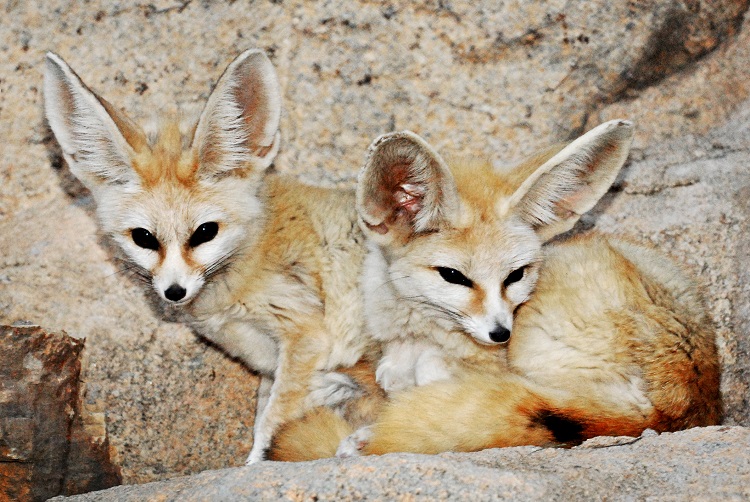
You might have noticed these foxes are playful, social, friendly, and most of the time chill. The friendly nature of these animals is why so many people set out to own one as a pet. Female foxes will become aggressive if they think their babies are in danger, while males tend to be aggressive when it’s time to begin finding a female.
The fennec fox is a predator that protects its family, territory, and home from other animals such as insects, birds, small mammals, reptiles, jackals, and other canids. They do not like loud noises, seem to always be on high alert, and will flee from the area if startled or scared.
Food & Eating Habits
A fennec fox is an omnivore and nocturnal, so living in the wild it’s going to be hunting at night for food and be active during this time. They will eat rodents, lizards, birds, and bird eggs, and love to munch on a variety of insects such as locusts and grasshoppers.
The vulpes zerda loves plants, small shrubs, leaves, roots, and fruits, which gives them all of the hydration that they need.
I found it interesting that the fennec fox requires little water since its kidney functions in a way that allows for the conservation of water. Between the water found in the plants and licking dew from the dens, it doesn’t need to seek out additional water sources.
This makes the fennec one of the few carnivores that can survive well in the Sahara since they have the ability to survive without constant water.
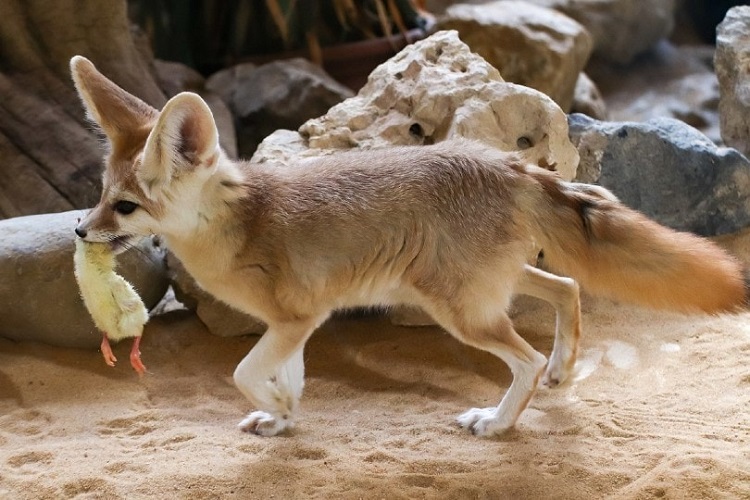
The unusually large ears of the smallest species of fox serve many purposes with one being that they use their large ears to help them listen for prey.
They will dig out the underground prey using their feet, and they have been known to go after other large mammals such as rabbits. In captivity such as at the zoo, these cute little creatures will eat rodents and enjoy meals that include mice, insects, vegetables, and fruits.
Native Habitat and Range
The fennec fox is native to North Africa and the Sub-Saharan desert and can be found in locations including:
- Chad
- Algeria
- Libya
- Mali
- Egypt
- Sudan
- Niger
- Western Sahara
- Sahara Desert
- Tunisia
- Morocco
- Mauritania
- Arabian Peninsulas
The vulpes zerda live in vast treeless sand areas where there are little to no human settlements, can thrive with sparse vegetation, and make themselves small sand dunes or burrows in the desert environment.
Lifestyle
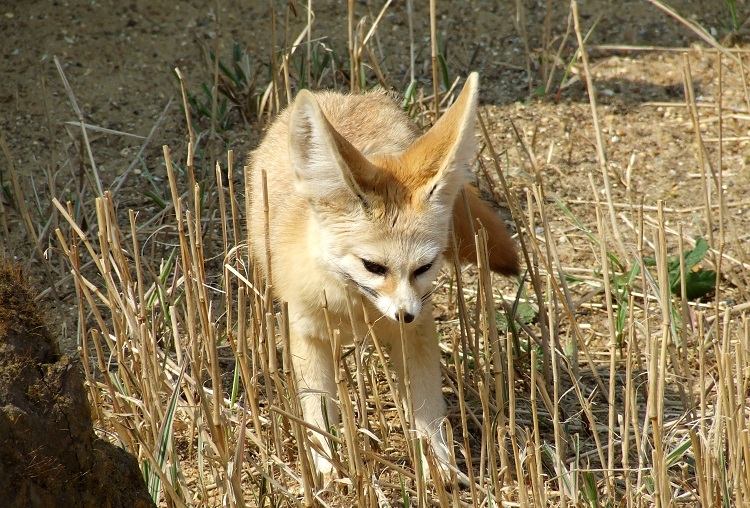
Have you ever had a cat or dog that liked to sleep all day long? I have, which is why I can relate to the fennec fox since its habit is to sleep during the day inside their den underneath the sand dunes during the daytime hours.
They become active at night and will venture out of the dunes to roam around and eat. Unlike a lot of other foxes, these creatures are social and do keep the company of about 10 other fennecs around so they form small communities unless it’s mating season.
Communication
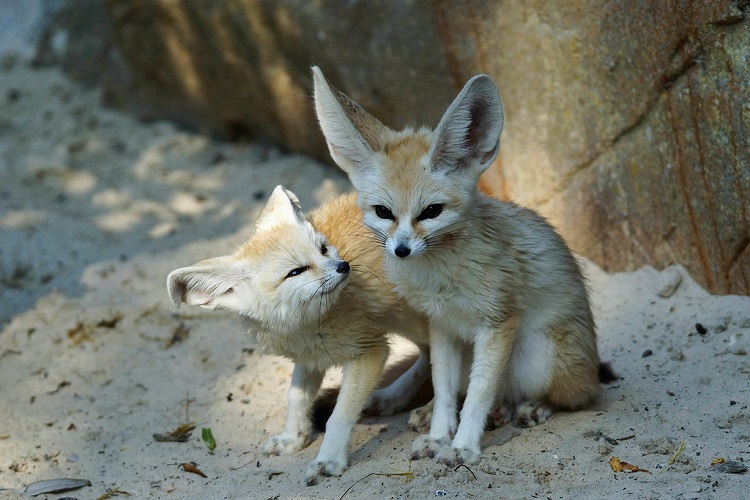
Two fennec foxes will communicate with one another using various noises during times of social interactions which include growling, whimpering, barking, shrieking, howling, and squeaking.
Reproduction and Development
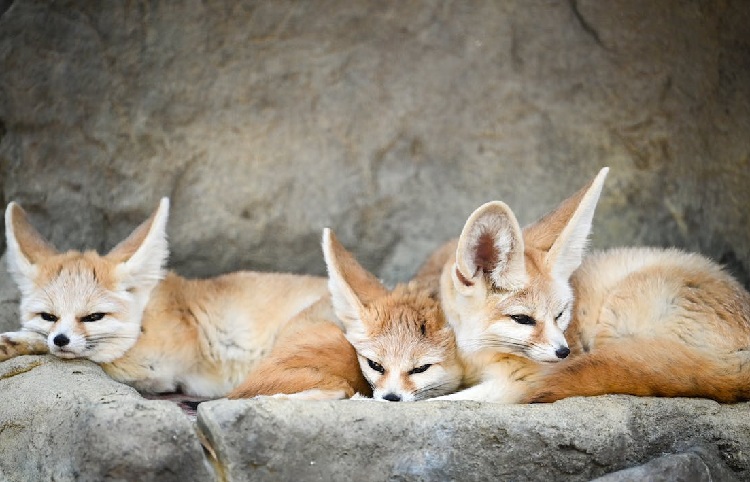
A fennec fox reaches sexual maturity when it’s 10 months old with the breeding season starting in January and going only until February.
An incredible fact about their mating habits is that they are monogamous creatures and will only have one mate for life. Males are aggressive and use urine to mark their territory during the six weeks of rutting.
The females experience up to two days of estrus, which is followed by mating, and then conception. The gestation period for these animals is fairly short and will last between 50 to 53 days. During this time and after birth for four weeks, the male will offer food to the female and also defend them.
The females only have the ability to give birth once a year and reproduce between 2 to 4 kits in the litter. The pups are blind but born with fur, and after 11 days their eyes will open. Within 14 days, the pups can walk. These babies are weaned quickly with only 60 or 70 days in between the eggs hatching and starting to hunt.
Life Span
The life span of these animals is generally around 10 to 12 years, although fennec foxes are capable of living up to 14 years in captivity.
Sleep Habit
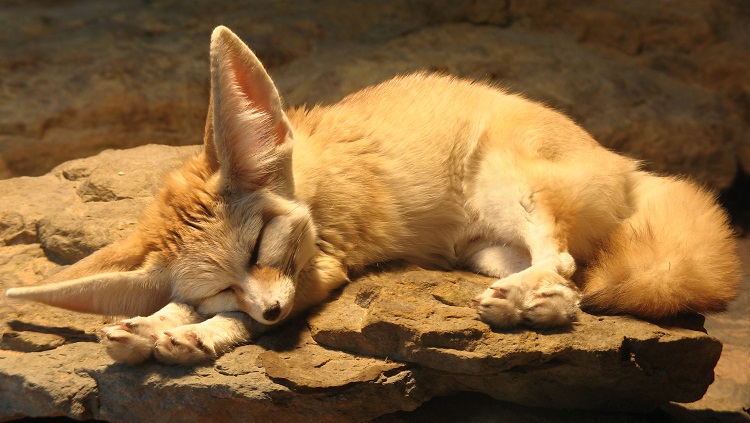
A fennec fox is going to spend the day sleeping for long periods since this is when it’s hot outside, which makes them a nocturnal creature The foxes will wake up once it gets dark and cools down and that’s when they are most active, and roaming around the desert environment.
Desert Adaptions
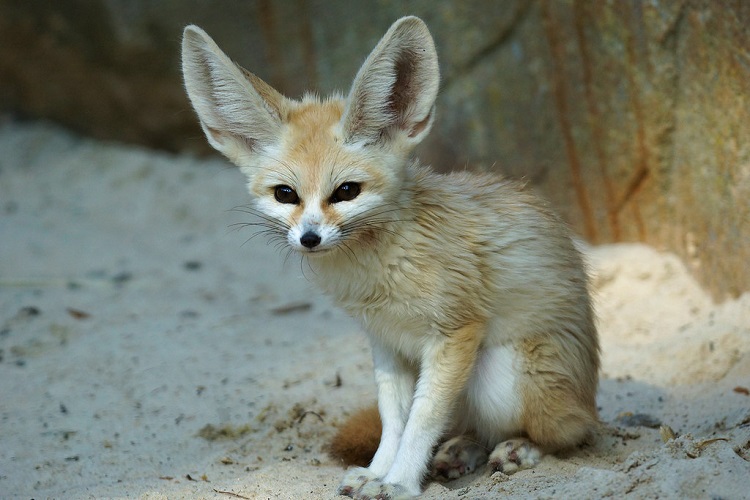
The fennec fox inhabits small sand dunes in the desert and will burrow itself to keep out of the long periods of extreme heat in the deserts of north Africa and the Arabian Peninsulas.
Fennec foxes live in dens that can be up to 3 feet in the ground which provides them with a cool shelter until nighttime when they become active. Up to ten individuals or other families may be in one of these underground dens and they enjoy licking the dew that forms in their dens to obtain moisture.
Social Structure
Fennec foxes are monogamous creatures that live in groups that include fennec families with up to ten individuals in each family. Fennec families dig in the sand to find food and digging has high effectiveness at finding prey buried underground.
Do you know how dogs and cats mark their territory with urine? The fennec fox does the same thing and will mark their dens with both urine and feces to try to keep other foxes away from what they consider their home.
Conservation Status
The fennec fox is classified as being of Least Concern on the Threatened Species Red List developed by the IUCN, and it has been that way since 2015. In countries such as Egypt, Algeria, Morocco, and Tunisia, the fennec fox is legally protected.
While precise population figures aren’t known, it’s thought to be decent based on information gathered since the fennec fox is bred commercially and commonly trapped to either be sold in the tourist trade or trapped for exhibition purposes.
Predators
It’s a sad fact and makes my blood boil that the main predator of the fennec fox is humans since humans kill these adorable creatures for their lovely fur coats. Humans also trap fennecs and sell them either to tourists or in the pet trade business.
The indigenous peoples that live in North Africa consider their fur a prized possession. Sadly, humans are also destroying the fennec habitats through the development of human settlements and agriculture.
While humans are the biggest predator, other predators exist including hyenas and birds, but since the foxes are nocturnal and stay inside their dens during the day, these predators rarely have the ability to catch a fennec fox.
The cream-colored coat also allows the fennec fox to camouflage itself which protects it from being easily seen.
Legality
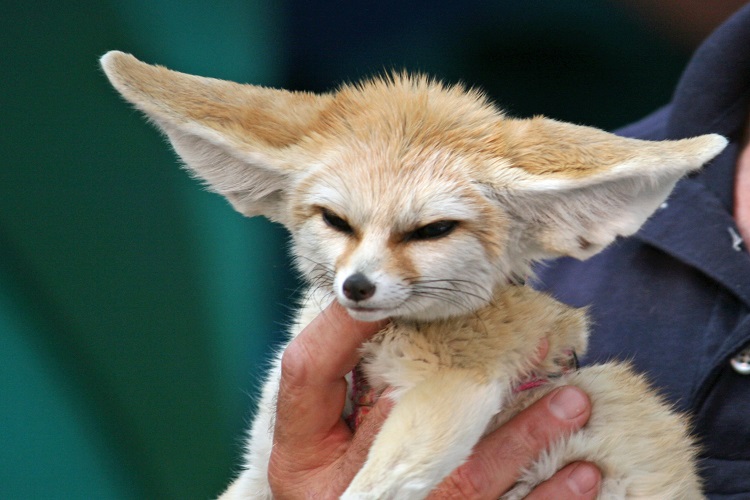
Within the United States, owning a fennec can either be illegal or legal depending on the laws pertaining to exotic pets within that state.
The United States Department of Agriculture lists the fennec fox as a small wild/exotic canid. It’s illegal to own a fennec if you live in Washington, Minnesota, Nevada, and Missouri. Some eastern states require exotic pet license that you need to own one.
Inbreeding of these creatures can be an issue, which is why the United States set up a breeders registry in an effort to combat that. The commercial breeders remove the pups from the mother and will hand raise them since the tame foxes are worth more and can be sold for between $2,000 and $2,5000.
Do Fennec Foxes Make Good Pets?
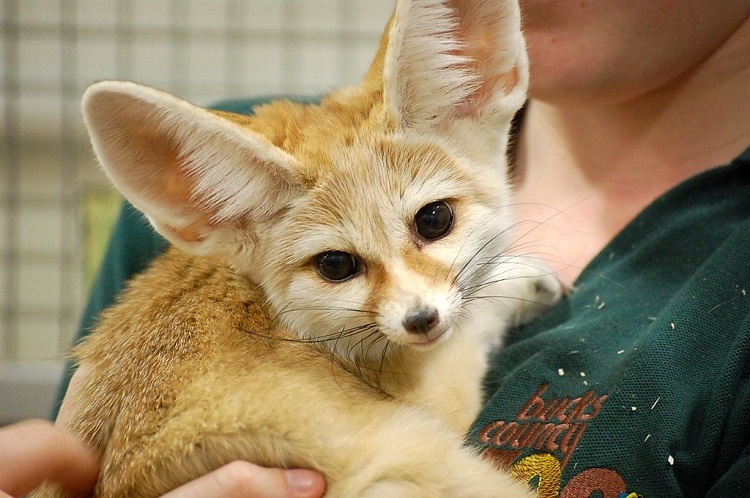
A fennec fox would not make a good pet in most situations since they do not enjoy being cuddled or even held, even though they are playful and active just like a dog.
They can thrive without a lot of human contact but are social creatures by nature. A fennec might even bite you if they get scared or startled. You’d also have to accept the fact they mark their territory with urine as other canids do.
That being said, some people do keep them as pets because of their dog-like characteristics, including their fluffy tail and playfulness, but it’s not in the best interest of the fox to be kept inside of a house all of the time.
If you’re insistent on having a fennec pet, then you should have adequate outdoor space for them to run, play, sleep, and roam. You’ll find that the fennec fox is loving, smart, and very loyal since it protects those around it.
Common Health Problems
Since the fennec fox is similar to a dog and even has a similar body size, the health problems that can occur are similar to those of a small dog, which include:
- Skin infections
- Heart disease
- Liver disease
- Kidney disease
- Intestinal parasites
- Mites
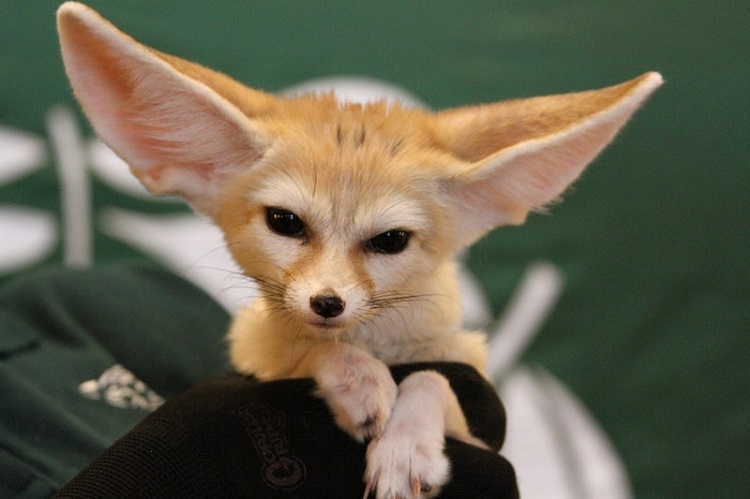
Additionally, they will need the same type of vaccines that dogs and other canids require beginning when they are pups such as rabies, adenovirus, canine distemper virus, and parvovirus. Annual wellness checks, flea medications, heartworm medication, and other similar preventative measures are suggested too.
Fun Facts
The fennec fox is the smallest out of all foxes and may be best known for having extremely big ears and a luxurious tail, but did you know there are other cool facts about this animal that are going to make you go “awww” more than once? I am going to have you say this out loud as you learn additional information below.

- Fennecs can dig holes up to 20 feet deep to get their prey.
- When a fennec fox is content, it will purr just like a housecat.
- They are sneaky and will climb right out of any enclosure.
- Females are called vixens, males are known as reynards, and baby fennec foxes are called kits.
- A group of fennecs is called a skulk or leash.
- A smell is emitted from a scent gland located on their tails when they are scared, threatened, or startled and it’s a musky odor that you won’t want to be near.
- During the mating period in January, the females can develop love handles or suffer from alopecia.
- Their body will shiver if the temperatures are below 68 degrees F since the mammals are native to the warm climate in Africa.
- They have the ability to jump 3 feet in the air to reach birds, bird eggs, or other items in a higher location
- A fennec fox will dissipate heat through their oversized ears which allows them to stay cool during long periods of extreme temperatures found in north Africa.
- A vulpes zerda tail can be anywhere from 7 inches long to 12 inches long.
Cultural Depictions
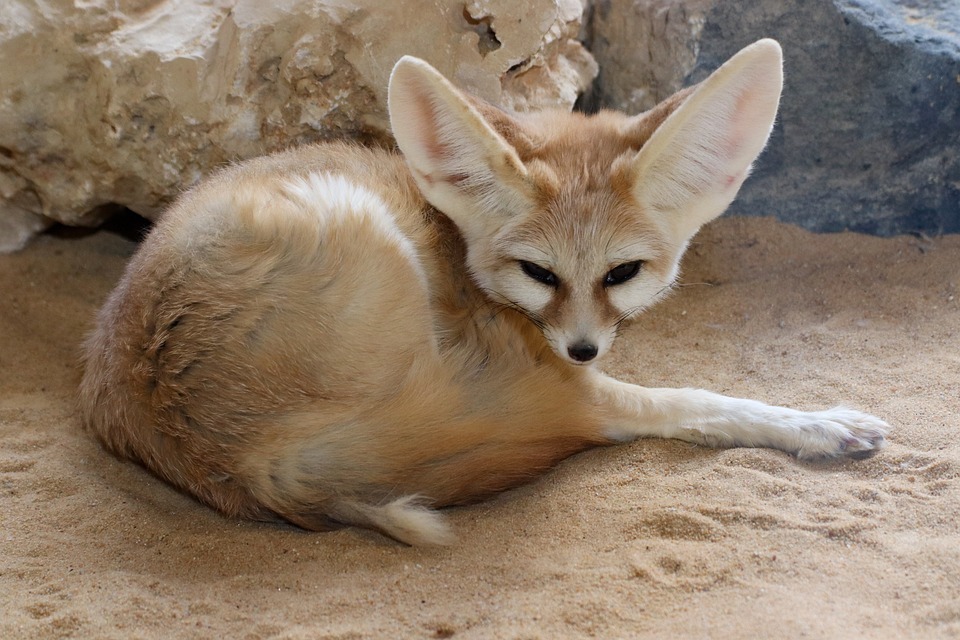
The fennec fox is considered the national animal of Algeria and “Les Fennecs” is the nickname for the Algerian national football team.
How To Care For a Fennec Fox?
A fennec fox will require special care if you wanted to keep one in your house, which means that you’d need to keep your house free of dust, have ventilation at all times, and keep the humidity low.
If you want to provide optimal care for the fennec fox, then it’s important you let them hang outside as much as you have the ability since that is their normal environment and that’s where they feel comfortable.
Just like with an energetic dog, the outside needs to be big enough for the fennec fox to run around and play since they do not do well just as captive animals indoors.
Having a large plot of land with a fence allows the fox to roam for long periods is ideal, and there should be plenty of rocks and trees around for them. Putting water outside for them and having food sources nearby is important.
Wire brushes would be required to brush the wooly undercoat of the vulpes zerda and since they are fluffy, they would need to be brushed more than once a week. They often would need to be caged if you weren’t home for long periods, most times cannot be leashed trained, but can be trained to use a litter box.
Do Vets Provide Care For Fennecs?
Exotic pet care is a specialty that many traditional veterinarians do not have the training or capabilities to handle. You’d be wise to contact your vet before bringing in a fennec fox because not every vet will care for this animal since it’s exotic.
Conclusion
The fennec fox is the smallest fox species and lives in desert locations including Africa and the Saharas. Known for having big ears and tiny bodies, they use their ears for hearing prey underground and to help keep themselves cool during times of extremely high temperatures.
Their nocturnal nature allows them to avoid the few preys that are around, with humans continuing to be the biggest threat to them. I hope you feel closer to this beautiful creature now that you have learned more about them and understand why it’s best to admire them from afar.


